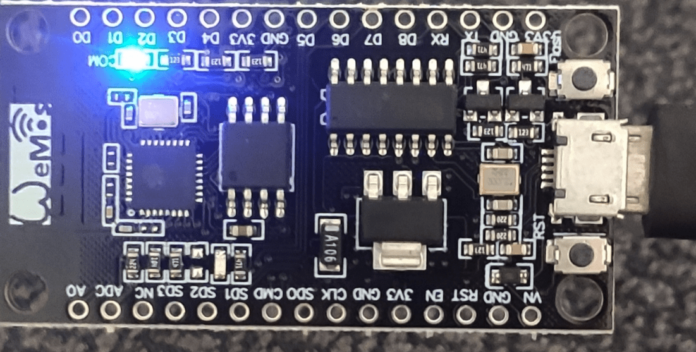Popular open-source firmware WLED is used to operate LED strips, especially ones that use chips like the WS2812B. Through the use of a smartphone app, web interface, or interaction with home automation systems, users may create amazing light displays and effects. Users, however, can get the annoying notification, “wled device could not be reached” This notice indicates that there are connectivity problems, which can be caused by anything from firmware issues to network configuration errors. We will examine potential reasons of this problem and provide practical troubleshooting techniques in this extensive guide to get your WLED gadget working again.
Table of Contents
What is WLED?
Microcontrollers like the ESP8266 or ESP32 can be made into smart lighting controllers for individually addressable LED strips with the help of an effective firmware called WLED. Its user-friendly interface makes it simple to alter the animations, effects, and colors. WLED is a flexible option for do-it-yourself lighting projects since it can be controlled in a number of ways, such as through a web interface, MQTT, and HTTP requests. Numerous features are available to users, including animations, settings, and even connectivity with Home Assistant and Arduino platforms.
Common Causes of Connectivity Issues
One of the following possibilities is usually the cause of the “WLED device could not be reached” notice that users receive:
- Network Configuration Errors: In order for wled device could not be reached to connect to Wi-Fi, the network settings must be correct. Incorrect SSID or password can cause problems and result in unsuccessful connection attempts.
- IP Address Conflicts: When several devices connected to the same network have the same IP address, it can lead to a conflict that makes some or all of the devices inaccessible.
- Wi-Fi Signal Strength: The connection between your computer or smartphone and the wled device could not be reached may be broken by a weak Wi-Fi signal or interference from other electrical equipment.
- Firmware Problems: The device may not work properly due to bugs or faults in the WLED firmware. For best results, firmware upgrades must be applied on a regular basis.
- Issues with the Power Supply: An insufficient power supply may cause the device to behave erratically. Making sure the WLED gadget is getting enough power is essential.
- Device Overload: The wled device could not be reached may experience connectivity issues if it is handling a lot of LEDs or complicated effects.
Troubleshooting Steps
Users can utilize the methodical troubleshooting procedures listed below to fix the “wled device could not be reached” issue:
Step 1: Check Network Settings
Make sure your wled device could not be reached is set up properly to establish a connection with your WiFi network. Check the following:
- Verify that the password and SSID you supplied in the WLED settings correspond to the ones on your Wi-Fi network.
- Wi-Fi Band: 2.4 GHz networks are usually used by wled device could not be reached. If your router does not enable dual-band connections, make sure your device is not linked to a 5 GHz network.
Step 2: Restart Your Devices
Restarting the computer can sometimes fix connectivity problems:
- WLED Device: To perform a power cycle, unplug your wled device could not be reached from the power source and plug it back in after a brief period of time.
- Modem/router: To clear temporary difficulties and refresh network settings, restart your modem or router.
Step 3: Check IP Address
Verify the IP address that is linked to your wled device could not be reached if you think there may be an IP conflict:
- Reach the Router Configuration: Access the web interface of your router to see the devices that are connected and their IP addresses.
- Assign a Static IP: To avoid future conflicts, if needed, give your wled device could not be reached a static IP address.
Step 4: Test Wi-Fi Signal Strength
Insufficient signal strength may prevent communication:
- Router Distance: Verify that the WLED device is within a reasonable range of the wireless network router. If need, bring it closer.
- Reduce the interference that comes from other electronic equipment, like microwaves and cordless phones, as they can interfere with the Wi-Fi signal.
Step 5: Update Firmware
Issues could arise from an outdated firmware version:
- Look for any updates: Check for the most recent firmware version by going to the official WLED GitHub source.
- Update Procedure: For your WLED device, update the firmware by following the instructions. This procedure frequently fixes issues and boosts stability.
Step 6: Inspect Power Supply
Make sure the WLED gadget has enough power:
- Amperage and Voltage: Make that the power source satisfies the voltage and amperage requirements for your LED strip.
- Electrical: Inspect every connector for damage or loose wires that could lead to power problems.
Step 7: Device Reset
If everything else fails, think about doing a factory reset:
- Factory Reset Procedure: To learn how to return your device to its original settings, go to the WLED handbook. All configurations will be lost during this procedure, so be ready to set everything up again.
Conclusion
Although receiving the annoying notice “WLED device could not be reached” can be annoying, consumers can frequently fix the problem and continue to enjoy their LED lighting settings by methodically troubleshooting the problem. Future connectivity issues can be avoided with routine maintenance, such as verifying the network configuration and scanning for firmware updates. Your WLED device can bring dynamic effects and vivid colors back to your room with a little perseverance and patience.



